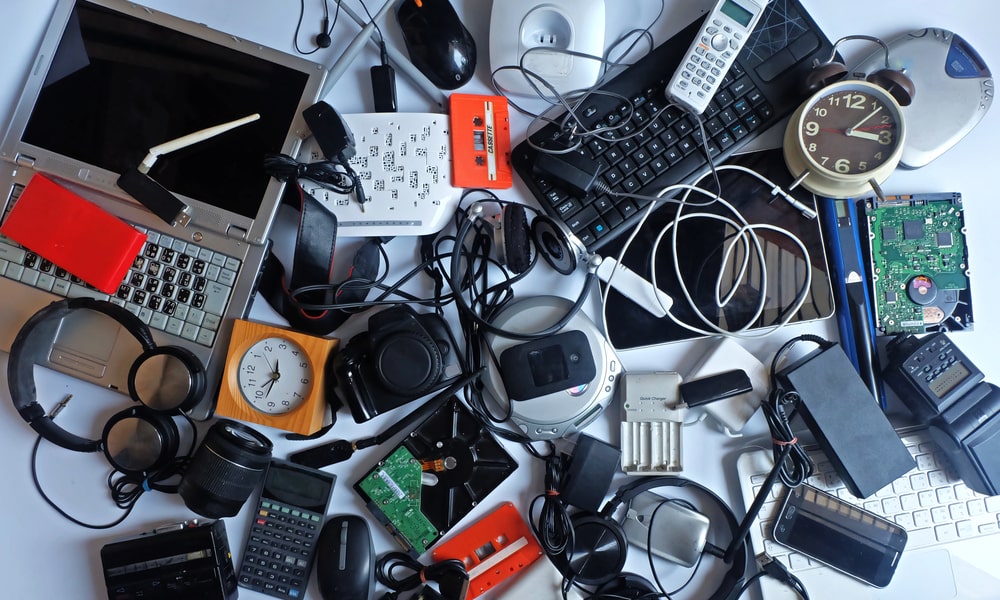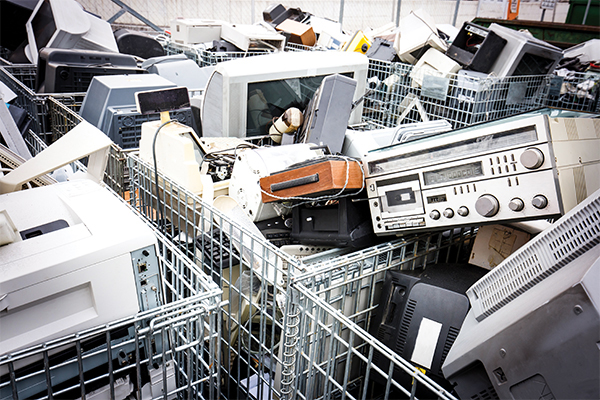
In Singapore’s tech-savvy culture, where smartphones, tablets, and gadgets are practically extensions of ourselves, upcycling electronics is becoming an innovative answer to an ever-growing problem: e-waste. Rather than letting old electronics pile up in landfills or exporting them to countries ill-equipped to handle them, upcycling is reshaping how we view and reuse our devices, creating a circular economy and helping Singapore meet ambitious sustainability goals.
What is Upcycling Electronics?
Upcycling electronics, at its heart, involves taking used or outdated devices and giving them a new life—often with a different function or a fresh design. Unlike recycling, where the focus is on breaking down materials to create something new, upcycling preserves parts of the original item, minimising energy usage and resource consumption.
Singapore, generating over 60,000 tonnes of e-waste annually (National Environment Agency), faces an increasing need for sustainable approaches to tackle this environmental issue. Upcycling offers a creative and cost-effective alternative to recycling, extending product life and reducing the carbon footprint.
Why Upcycling Electronics Matters
With e-waste poised to grow by 30% in the next few years, upcycling electronics holds both environmental and social benefits:
Resource Conservation:
Precious metals, including gold and palladium, are often embedded in electronics, yet frequently discarded. Upcycling helps reduce the demand for raw material extraction.
Reduction in Carbon Emissions:
By reusing existing products, the carbon emissions associated with manufacturing and distributing new electronics are substantially lowered.
Affordability:
Upcycled devices or gadgets can be repurposed at a fraction of the cost of buying new, making technology accessible to more people.
Job Creation:
Upcycling stimulates new jobs within green industries, further supporting Singapore’s economic and sustainability goals.
Creative Ways to Upcycle Electronics
Upcycling doesn’t just involve tech specialists or design enthusiasts. With a bit of creativity, almost anyone can give their old electronics a second life.
DIY Home Decor:
From turning obsolete hard drives into clocks to using circuit boards as art, upcycling adds a unique, modern edge to home décor.
Garden Gadgets:
Convert your old smartphones into garden monitors, perfect for tracking moisture levels or monitoring temperature.
Portable Power Banks:
Repurpose laptop batteries to create a DIY power bank that can recharge small devices—a sustainable option for travel or emergency kits.
Children’s Toys and Projects:
Outdated keyboards and other gadgets are great tools for teaching children about electronics or for building fun projects together.
In Singapore, some community centres even offer workshops to guide people on how to creatively upcycle. This can be a way for families to bond while also promoting environmental consciousness.
Where to Upcycle Electronics in Singapore
If DIY isn’t your style, or if your gadgets need more technical expertise, several organisations in Singapore can help you with upcycling electronics:
Repair Kopitiam:
A nationwide initiative that encourages repair culture, where volunteers help repair broken electronics and guide visitors through the process. Located at multiple sites, including Yuhua and Tampines, Repair Kopitiam empowers individuals to extend the life of their electronics.
Trash to Treasure by Tinker Space:
An upcycling movement that creatively repurposes discarded items, from plastic to electronics. This initiative provides a space where people can learn, collaborate, and work on innovative projects.
Zero Waste SG:
A non-profit organisation dedicated to minimising waste in Singapore, which partners with various organisations for upcycling projects and education.
Benefits of Upcycling for the Environment and Economy
The National Environment Agency estimates that only 6% of Singapore’s e-waste is recycled, making upcycling a critical part of waste reduction efforts. By encouraging a circular economy model, Singapore is positioning itself as a leader in sustainable development. Upcycling offers several key benefits:
Energy Savings:
Upcycling processes typically consume less energy than recycling or producing new electronics.
Reducing Landfill Waste:
Electronics contain harmful substances like lead and mercury, which can leak into the soil and water supply if improperly disposed of.
Supporting Circular Economy Goals:
Upcycling aligns with Singapore’s Green Plan 2030, aiming for a zero-waste nation by encouraging reuse and responsible consumption.
Challenges and Limitations
While upcycling electronics offers many benefits, challenges remain:
Technical Knowledge:
Upcycling often requires technical skills, which can be a barrier for individuals.
Safety Concerns:
Handling electronics with hazardous materials can be risky if done improperly.
Market Limitations:
Finding outlets for upcycled goods, especially those with an artistic or niche appeal, may not always be straightforward.
However, as awareness grows and access to resources like workshops and community initiatives expands, these challenges become easier to overcome. The impact of upcycling electronics, even on a small scale, can be substantial.
How to Get Started with Upcycling Electronics
If you’re curious about upcycling but not sure where to start, here are some steps to consider:
Research and Inspiration:
Platforms like Pinterest and Instructables are brimming with ideas and tutorials for upcycling electronics.
Start Small:
Begin with smaller, simpler projects like repurposing a phone case or a broken keyboard.
Learn Basic Skills:
Taking a workshop or joining a local upcycling initiative can be a great way to learn the skills needed to upcycle electronics safely and effectively.
Stay Informed:
Follow environmental organisations, like Zero Waste SG, that share news on e-waste management and upcycling resources.
Incorporating Upcycling into Everyday Life
Encouraging an upcycling mindset doesn’t have to be a huge commitment. Small changes can lead to a significant difference in waste reduction:
- Opt for refurbished gadgets rather than new ones.
- Donate or repurpose electronics whenever possible.
- Educate family and friends on the benefits of upcycling.
The growing e-waste challenge needs more sustainable solutions, and by choosing to upcycle electronics, we can contribute to a more circular economy—where waste is minimised, and resources are reused rather than discarded. Every device upcycled contributes to a cleaner, greener Singapore, proving that we don’t always need something new to make a change.
In a world where convenience often comes at the cost of the planet, upcycling electronics offers a practical, impactful way to transform waste into worth.






